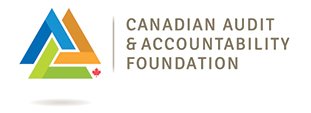February 13, 2025

I: What Is a Maturity Model?
A maturity model is a structured framework used to assess and guide an organization's progress in a particular area of interest, such as risk management, cybersecurity, project management, or any other discipline. It provides a way to measure and evaluate an organization's current capabilities and practices, as well as a roadmap for improving those capabilities over time (Chrissis et al., 2011). Maturity models typically consist of a series of defined stages or levels that represent increasing levels of capability, sophistication, or maturity in a specific domain. Each level describes certain characteristics, processes, and practices that an organization should have in place to reach that level (Abliwi et al., 2014) and (Röglinger et al., 2012).
The purpose of a maturity model is to:
- Assess Current State: Understand where the organization currently stands in terms of its capabilities and practices within the defined area.
- Define Improvement Paths: Provide a clear roadmap for progression from one level to the next, outlining specific actions or changes needed to advance.
- Facilitate Benchmarking: Enable organizations to benchmark themselves against industry best practices or standards.
- Facilitate Goal Setting: Help in setting realistic and achievable goals for improvement.
- Support Decision Making: Assist managers in making informed decisions about resource allocation, process improvements, and strategic planning.
Origin and Examples in Different Fields
Maturity models have their origin in the field of software engineering and quality management. One of the earliest and most well-known maturity models is the Capability Maturity Model (CMM), developed by the Software Engineering Institute at Carnegie Mellon University in the late 1980s. The CMM was created to help evaluate and improve the software development processes of organizations (Humphrey, 1989).
Since then, the concept of maturity models has expanded to various fields beyond software engineering. Here are examples of maturity models in different fields:
Popular maturity models include:
- Capability Maturity Model Integration (CMMI): Used for process improvement in software development and other engineering disciplines (Paulk et al., 1993).
- Cybersecurity Maturity Model Certification (CMMC): Designed for U.S. Department of Defense contractors to secure sensitive information (U.S. Department of Defense CMMC).
- Project Management Maturity Model (PMMM): Focuses on project management practices and capabilities (Kerzner, 2017).
- Information Technology Infrastructure Library (ITIL): Offers a framework for IT service management, including a maturity model for service delivery (AXELOS, n.d.).
These models help organizations understand where they are in their journey, where they want to go, and how to get there, making them valuable tools for strategic planning and improvement initiatives.
II: How Can a Maturity Model Apply to Risk?
Risk management maturity models offer organizations a structured framework to evaluate and enhance their risk management practices. These models facilitate an in-depth assessment of an organization's current risk management processes, ranging from how risks are identified and assessed to how they are monitored and mitigated. By using a maturity model, organizations can gain valuable insights into their risk management effectiveness and compare their practices against established industry standards and best practices.
About the Authors
Martha Genest
Martha is a leader on the Central Alternative Service Delivery (ASD) Team at the Canadian Food Inspection Agency (CFIA) with over 25 years of federal government experience. She has led audit, risk, planning, and reporting projects, including ten years in performance audit at the Auditor General’s Office. At CFIA, she established the first corporate Risk Oversight function and built a professional audit practices team. Martha has also led corporate-level risk, planning, and reporting initiatives and recently headed the Risk and Analytics Division, supporting the Chief Risk Officer and producing the annual Chief Risk Officer Report for the President.
Contact the author at:
martha.genest@inspection.gc.ca
Amani Ali
Amani is an Analyst leading key projects on the Central ASD Team at the Canadian Food Inspection Agency (CFIA). She holds a Master’s degree in International Development and Globalization and has gained valuable experience working with Global Affairs Canada, the Public Health Agency of Canada, and Public Services and Procurement Canada. Specializing in quantitative and qualitative analytics, public policy, and risk management, she has recently made significant contributions to the CFIA. Her most recent work includes developing criteria to assess risk management, conducting evidence-based evaluations, co-authoring the annual Chief Risk Officer Report and leading its communications and analysis for the President.
Contact the author at:
One of the primary benefits of a risk management maturity model is its ability to provide a roadmap for improvement. These models typically outline a series of maturity levels, each representing progressively sophisticated risk management practices. Organizations can use these levels to set achievable goals for enhancing their risk management capabilities. For instance, they may focus on refining risk identification processes before advancing to more complex risk monitoring and mitigation strategies.
As organizations progress through the maturity levels, they can develop comprehensive risk management policies and procedures. This includes defining clear roles and responsibilities, establishing risk tolerance levels, and creating robust risk management frameworks. Furthermore, the use of specialized risk management tools and technologies becomes more feasible and effective as organizations mature in their risk management practices.
Continuous improvement is a core principle of risk management maturity models. By regularly assessing their progress using the model, organizations can track improvements over time and make informed adjustments to their strategies. Additionally, as organizations mature, they tend to foster a culture of risk awareness and proactive risk mitigation. This cultural shift ensures that risk management becomes ingrained in the organization's operations, with employees at all levels becoming adept at identifying and addressing risks in their respective areas.
The ERM Program Audit Guide: Risk Maturity Model is a universal umbrella framework that measures organizations on their adoption of enterprise risk management (ERM) best practices from the most widely used risk management standards. Examples of well-known risk management maturity models include the COSO ERM Framework, the Risk Maturity Model (RMM), and the ISO 31000 Risk Management Standard. While these models vary in their specifics, they all aim to guide organizations in systematically improving their risk management capabilities. Ultimately, by advancing through maturity levels, organizations can enhance their resilience to risks and increase their ability to achieve strategic objectives while effectively managing uncertainty.


